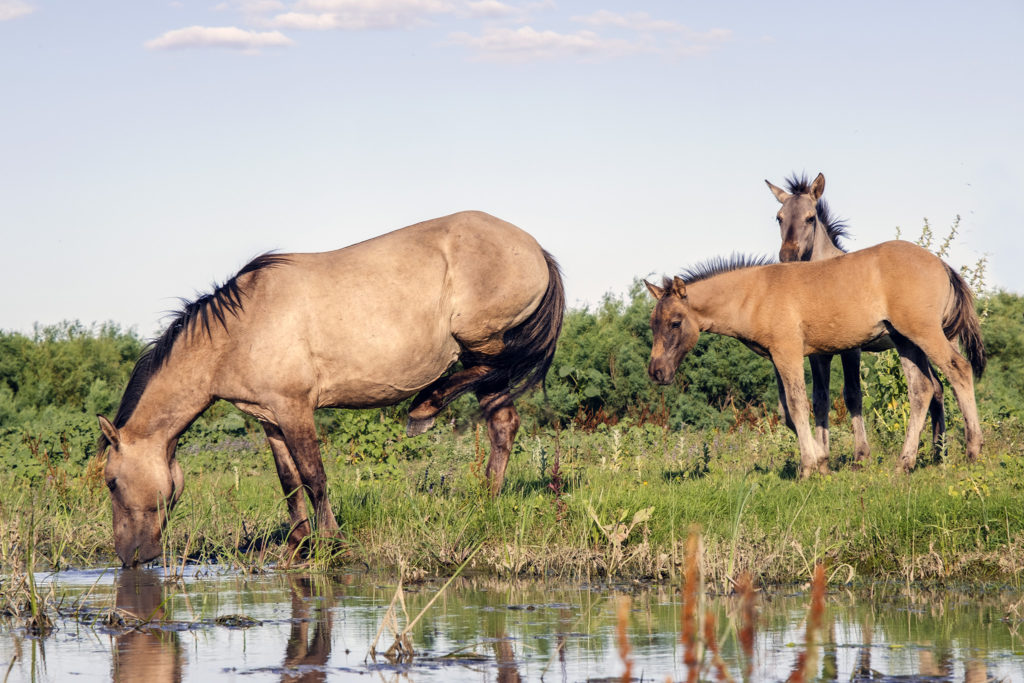Today, on International Vulture Awareness Day, ornithologist Mykhailo Nesterenko (Executive Director of Rewilding Ukraine) will talk about these mysterious birds: why they are important in nature, whether we have them in our region, why they decline, and much more.
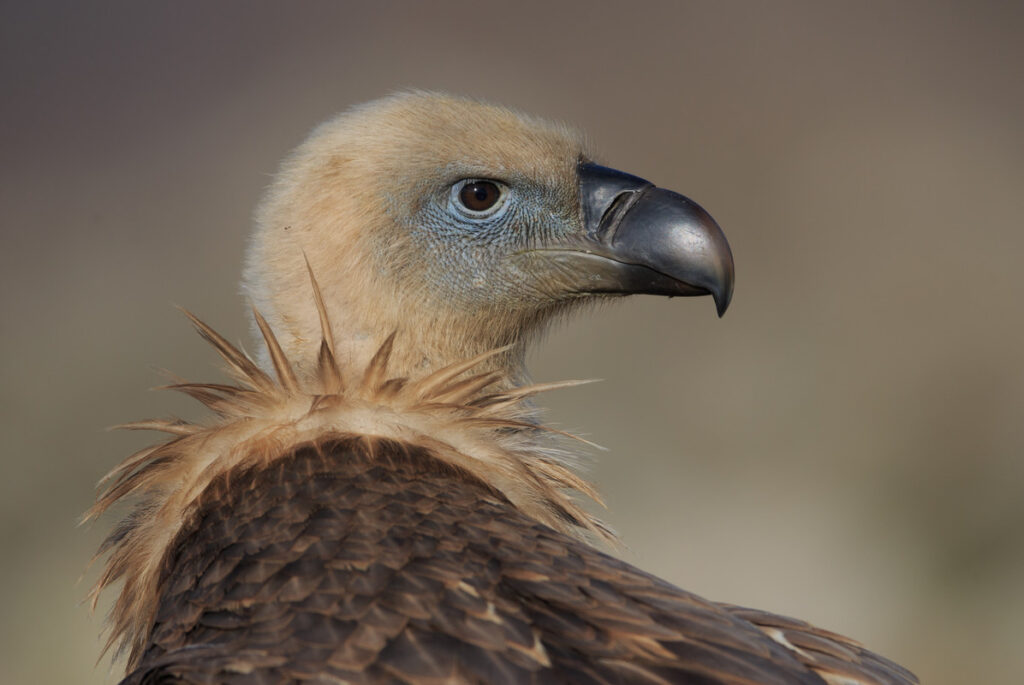
Mykhailo, few of the general public know about vultures, most often from cartoons or films, where vultures are often negative characters or an attribute of death and decay. Tell us a little more about these birds
Vultures are usually large birds that feed on dead animals. Perhaps that is why they have such a negative image among the people. Normally they do not hunt themselves, but pick up the leftovers from predators’ meals or feed on animals that died due to disease, weakness, or other reasons. So, they are, in fact, janitors of natural systems. Nature needs them, because they clean it of dead matter, and also prevent the spread of diseases such as rabies, anthrax, hog cholera, and others. It is interesting that the stomach of vultures can neutralize the pathogens of these diseases that affect predators and other scavengers.
Everything in their body is adapted to this way of life and nutrition. They do not find food often, not every day. When they finally do, they eat as much as they can and digest the food for quite a long time. Only large birds can afford to eat occasionally and survive, let alone fly. Usually, birds need to feed very often, because flying is very energy-consuming labor. Birds don’t have a lot of energy reserves, because for flight, on the other hand, a small weight is needed, which is achieved by all possible means, including empty bones, frequent emptying of the stomach, etc. If you’ve ever held a small bird in your hands, you’ve noticed how light it is, weighing almost nothing. Due to their large size and weight, vultures can go without food for quite a long time, some condors up to 70 days! In addition, scavengers have a hovering flight, that is, they do not flap their wings. Instead, they spread their wings and soar in streams of warm air.
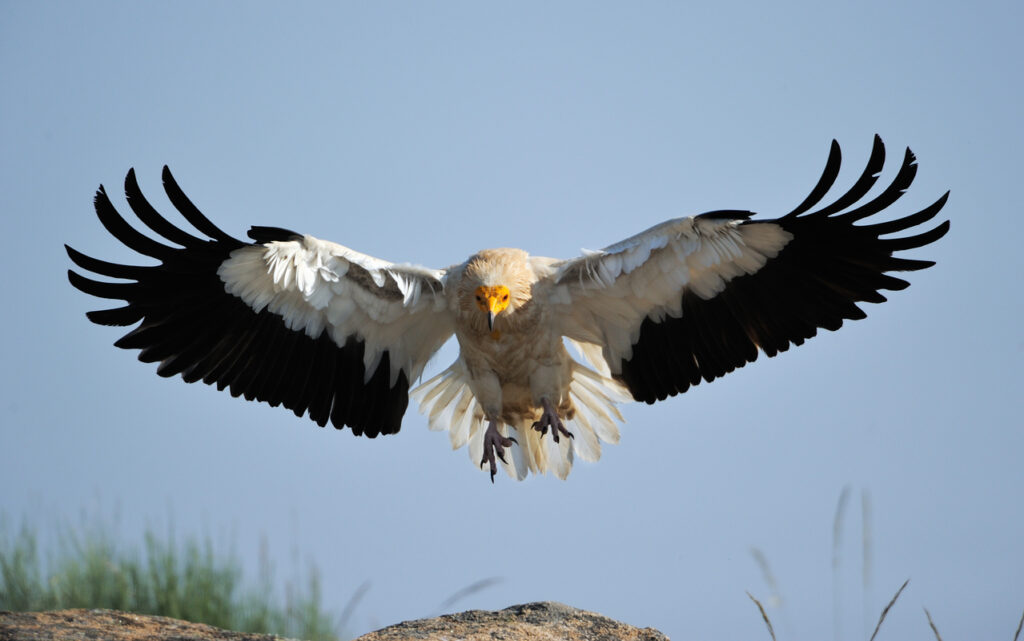
Can we see vultures in our region? After all, it would be very interesting to watch such huge birds soaring in the highlands
In general, these majestic birds are divided into vultures of the new and old world. The latter inhabit Asia, Africa, and Europe. In Romania, in the Carpathian Mountains, you can meet griffon vulture, cinereous vulture, Egyptian vulture, they also fly to other territories. It was reported that vultures once inhabited the Dobrogea area in Romania. About a century and a half ago, some people made a living by collecting the eggs of various birds and selling them to rich people interested in nature. At that time, it was very fashionable to have egg collections. There is literary evidence that egg collectors destroyed almost all cinereous vulture nests in Dobrogea.
In general, these birds prefer rocky mountains, hills, and uplands where they can build nests that are difficult for predators to reach. In Ukraine, the griffon vulture and cinereous vulture live in the Crimean Mountains. Vultures were also seen in other regions of the country, which is reflected in geographical names. For example, the name of the lake and the village of Kartal in the Danube Delta is translated from Turkish as “black vulture”. But over the last century, the number of vultures has drastically decreased, these birds have almost disappeared in the nature of Europe.
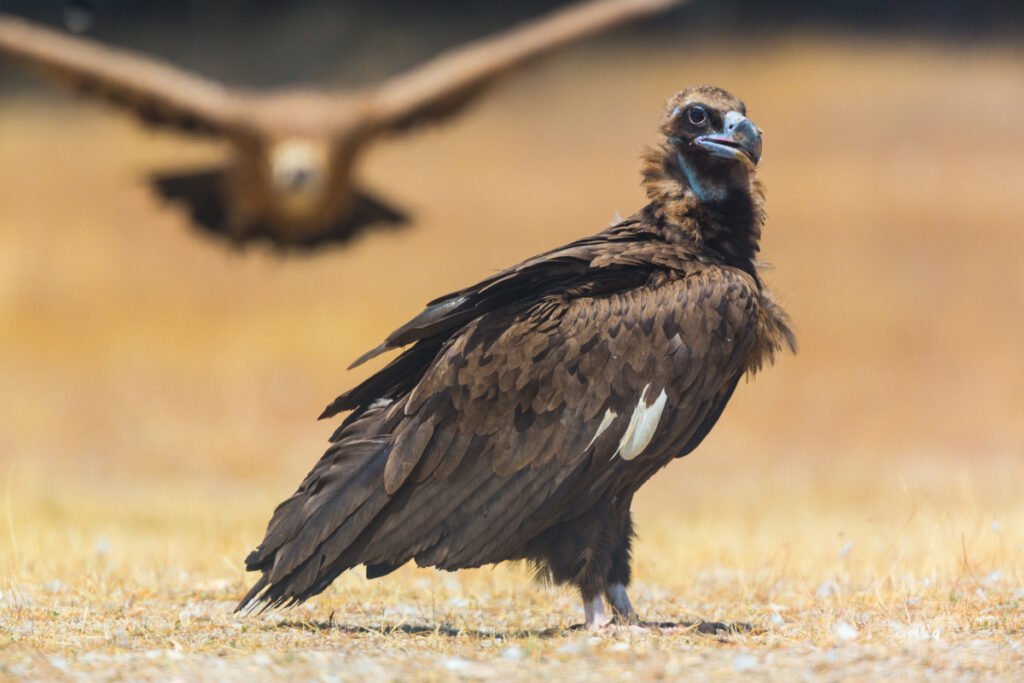
Why are there so few of vultures now? What caused their decline?
The main reason is the decrease in the number of animals in nature, especially large herbivores, on the remains of which scavengers forage. In addition, the number of predators, which are the first to hunt the prey, has also decreased sharply. Everyone has probably seen movies about Africa, where a lion kills an antelope and feeds on its meat, and when he leaves the bones (or carcass) of the animal, vultures come. The food chain, at the very end of which is the vulture, has broken. Therefore, these birds have almost disappeared.
Now these vulnerable giants face new threats, such as collisions with high-voltage power lines, which are dangerous for all large and less maneuverable birds. A common threat to most animals, and vultures are no exception, is habitat destruction. Also, they often become victims of intentional or unintentional poisoning. It happens that farmers throw poisoned carcasses into nature to poison a wolf or a bear that takes their livestock. But these are vultures who suffer more than others. They are very intelligent birds, for example, the bearded vulture has learned to break the bones of animals by dropping them from a great height or throwing stones at them to get the marrow. But they are helpless against humans. In addition, these birds are quite easy hunting objects, because they are large and poorly maneuverable.
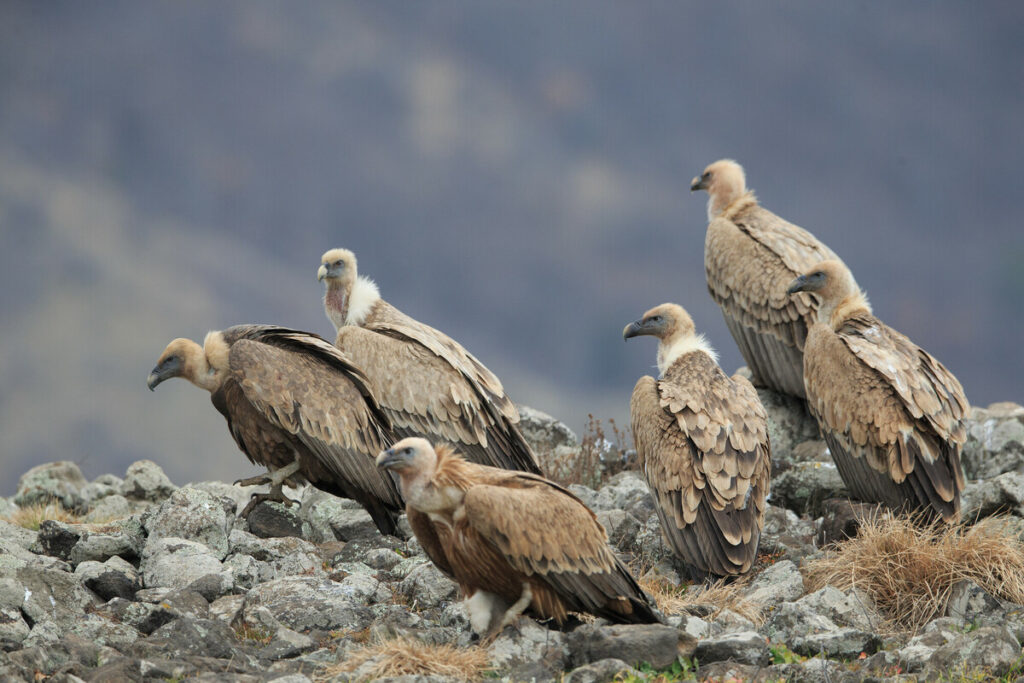
Is it possible to change the situation and restore the number of vultures in Europe?
Currently, projects are being implemented and measures are being taken to restore vulture populations in nature. In our rewilding landscapes in the Rhodope Mountains in Bulgaria and the Greater Coa Valley in Portugal, colleagues are trying to increase the abundance of large herbivores in the wild, such as fallow deer and red deer, to restore food chains. “Feeding stations” were also created for this purpose, where carcasses of animals are intentionally left for vultures.
Artificial nests were built in the Rhodope Mountains to facilitate the breeding of vultures. The conservationists work with local communities to counter the poisoning and deliberate extermination of these birds.
Sometimes it is necessary to return vultures to the territory where they once lived, releasing birds from zoos or breeding centers. For example, there is a cinereous vulture reintroduction project in Romania. Conservationists put transmitters on some of the released birds, and recently one of them flew to us in Ukraine, spent some time in the vicinity of Lake Kartal, and then returned to the territory of Romania.
In some countries of southern Europe, the legislation stipulates that farmers must take the carcasses of dead animals to special concrete platforms, where they will become food for vultures. But in most countries, farmers are required to dispose of dead livestock, take it out from nature, so scavengers have nothing to feed on.
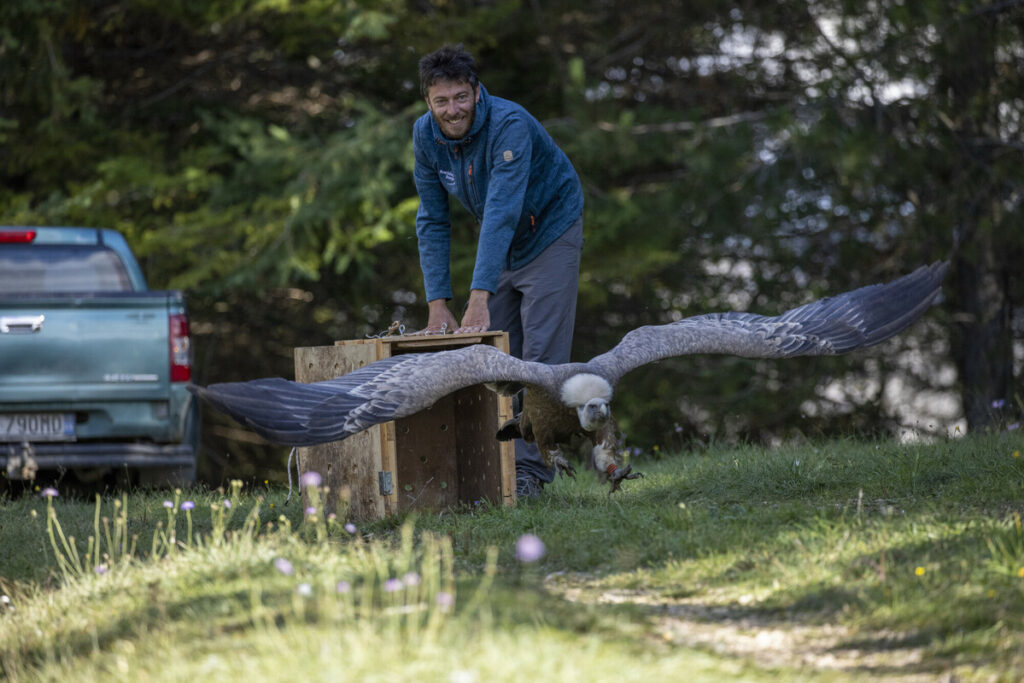
Do you have any plans to return vultures to the Danube Delta region?
It is still too early to talk about it. First, it is necessary to create conditions for them: restore food chains, return wild herbivores to our region, and return natural predators. We are working to reintroduce wild horses, water buffaloes, kulans, fallow deer, and other herbivores to the Danube Delta region. The owl reintroduction program is also being implemented. Other predators, such as the wolf and golden jackal, are making a comeback on their own. But until the moment when favorable conditions for vultures will be created, unfortunately, it is still a long way off.
It is nice to note that due to the long-term conservation efforts the vultures populations are slowly recovering. So maybe one day it will be possible to see vultures soaring in the sky over the Danube again.
